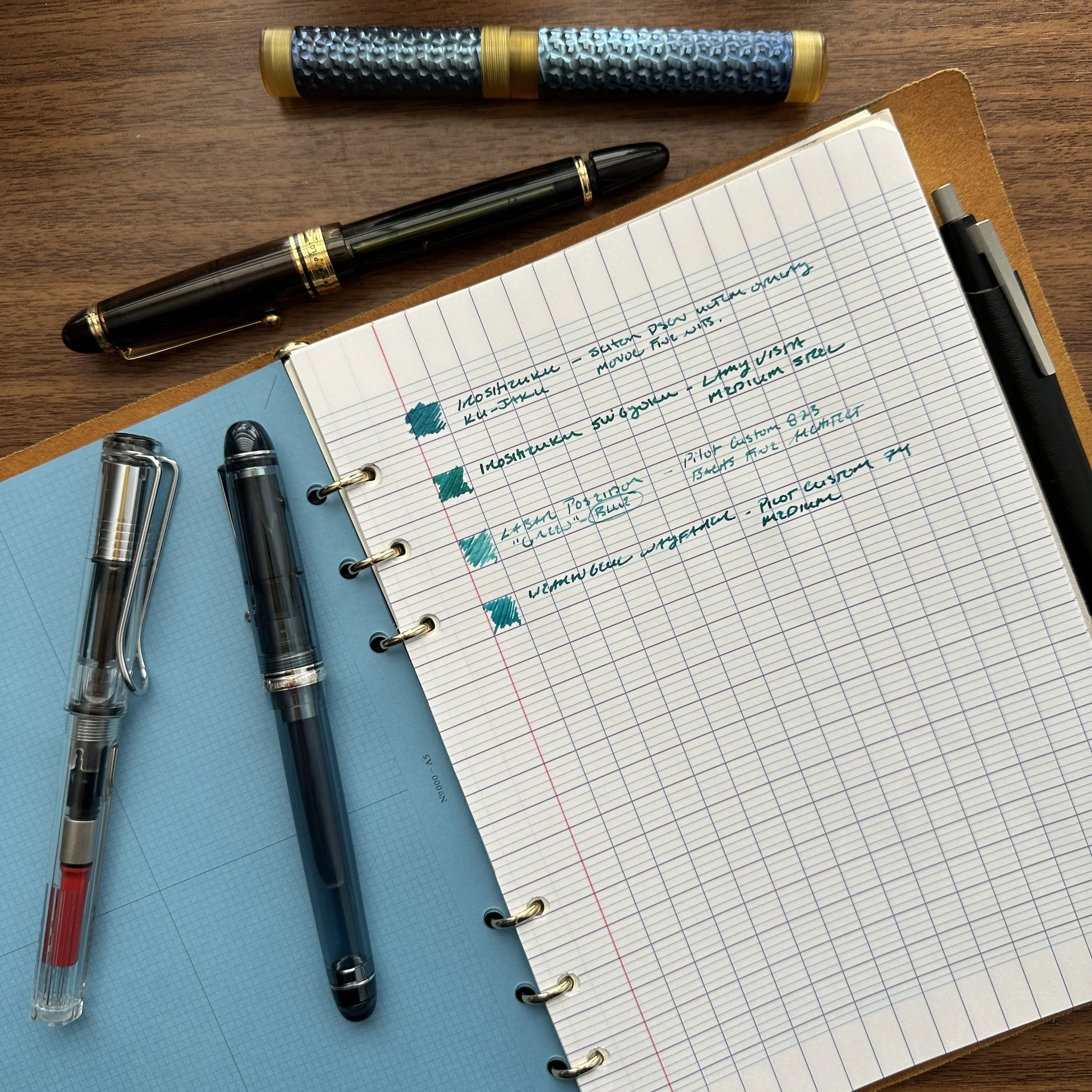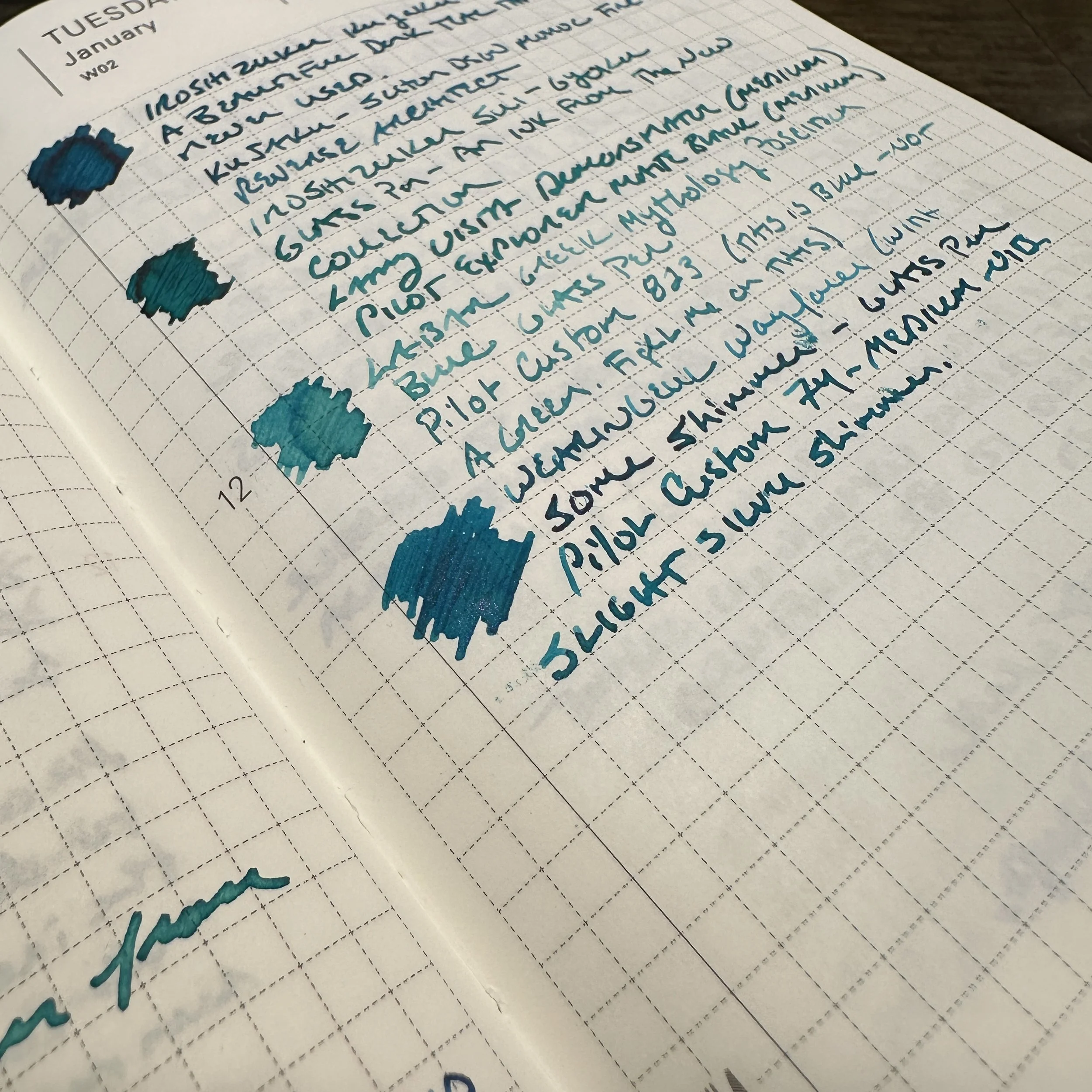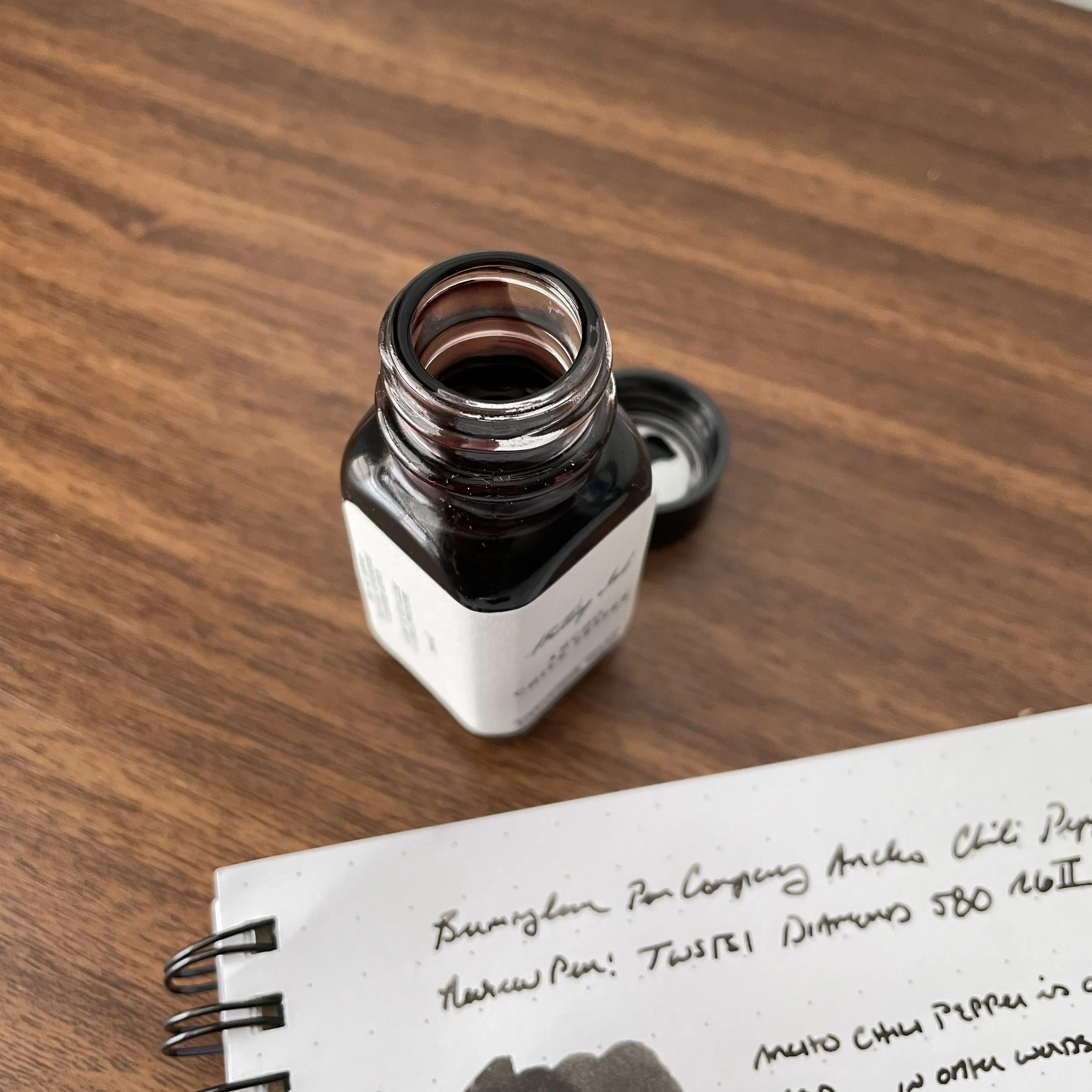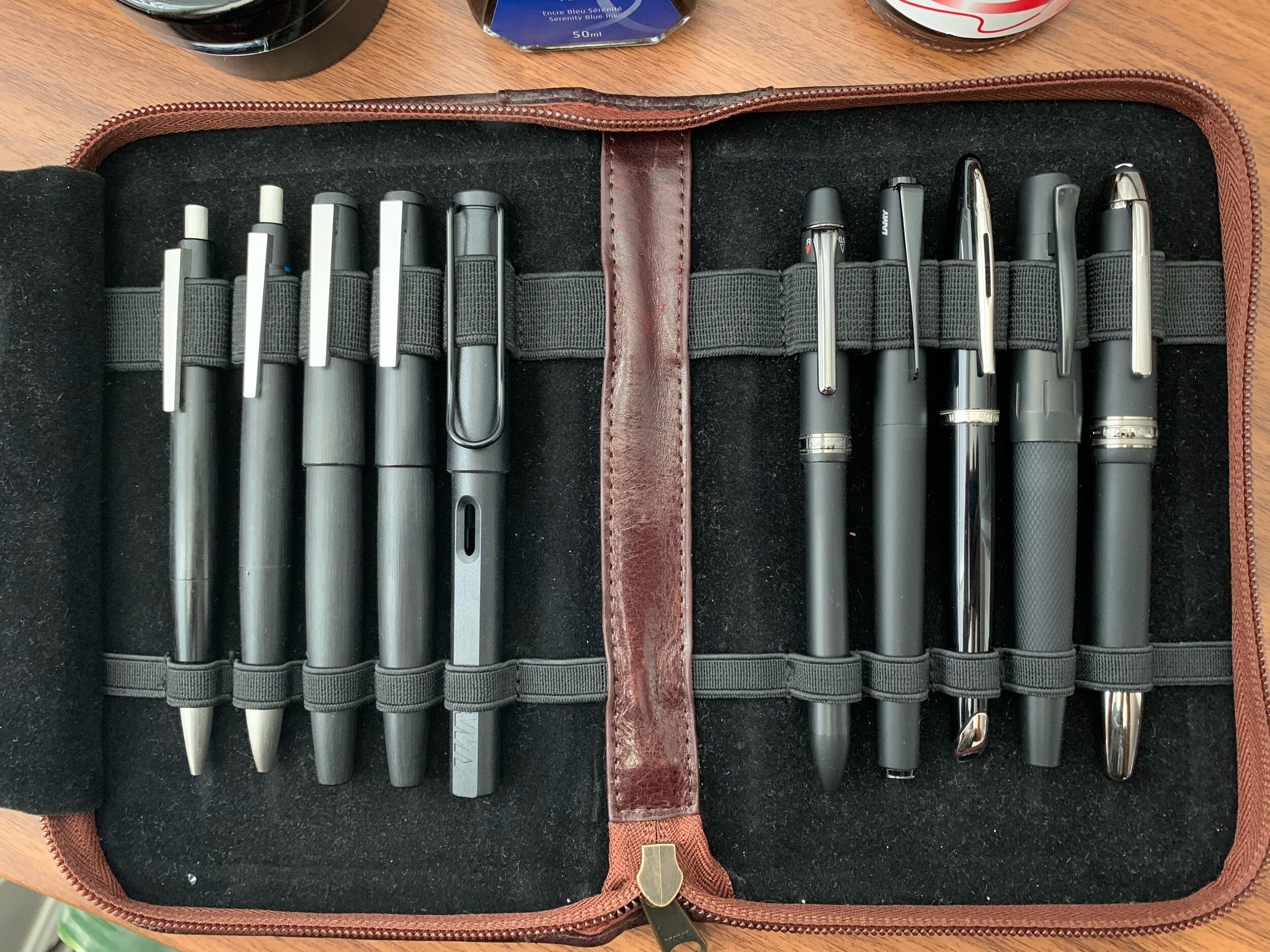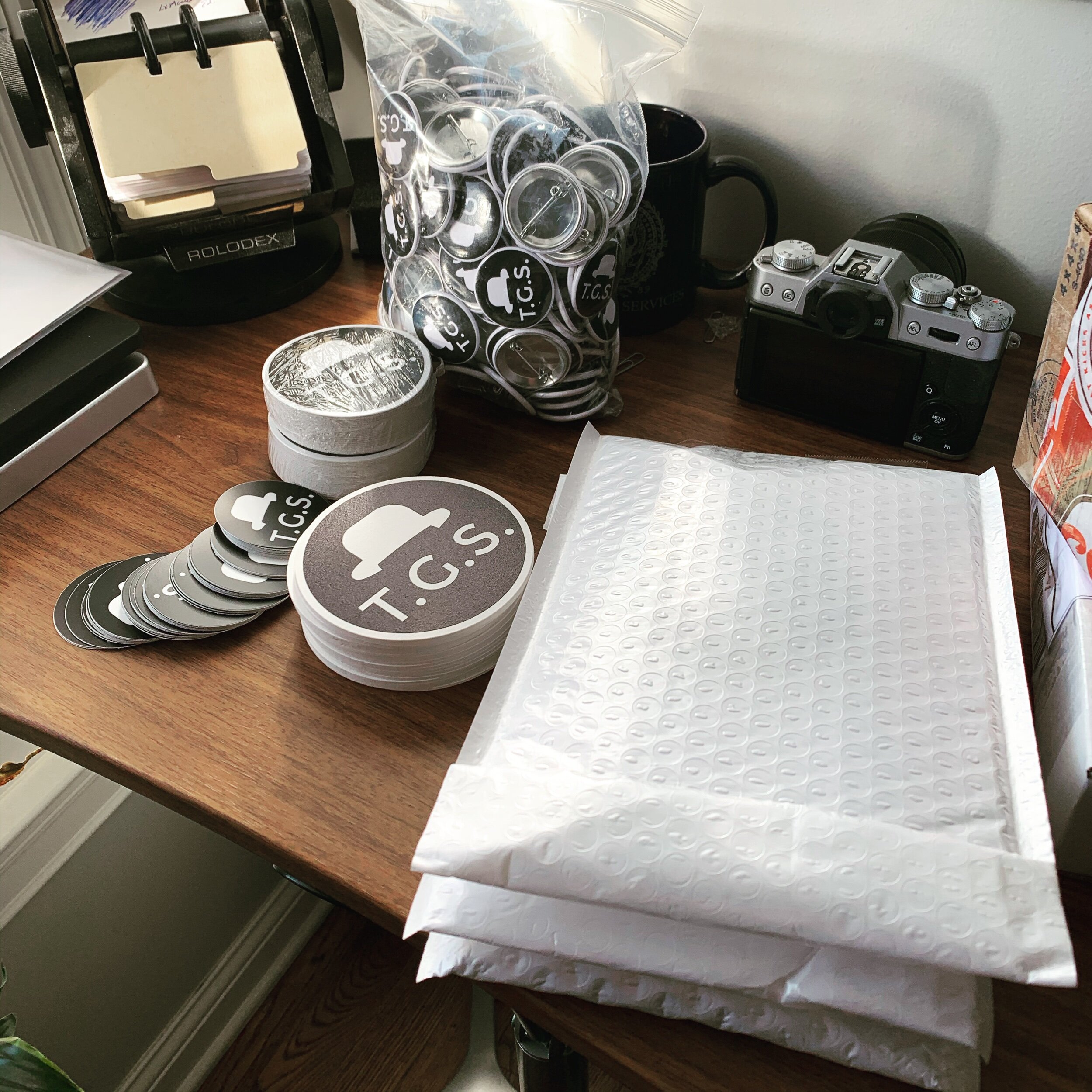Building on Wednesday’s post and accompanying YouTube video about why many of us love inexpensive pens, I’ve been thinking more broadly about the role that the less expensive stationery products play in my everyday rotation. While I firmly believe that all stationery - even the very nice pricey stuff - needs to get used at some point, because that’s what it’s made for - even I balk at using more expensive paper for things as routine as grocery lists, meeting notes that won’t be retained, draft markups, and other “junk paper” that I never intend to keep. Similarly, when I’m forced to write on cheap recycled copy paper at work, I don’t necessarily want to use my nicer inks in a context where they’ll just feather and bleed, and where I won’t get much enjoyment from the writing experience. So although I do tend to use the more “upscale” stuff for most of my personal journaling and longhand professional writing, here are five categories of relatively inexpensive stationery that I tend to keep on hand for the more mundane tasks:
Rhodia, Clairefontaine, Levenger, and Maruman Mnemosyne Paper. These paper brands handle most ink types relatively well, and the paper is fairly priced so that I don’t feel self-conscious about using it as scrap paper. Sure, I do sometimes still get comments from co-workers such as “You spent $8 on a legal pad?!?”, but honestly, if you care about a baseline level of quality in the tools you use, you learn to tolerate the attitude. (Sometimes I like to gently remind people that the legal pad I’m using still costs less than the coffee/beer they’re consuming during the course of our conversation, and will last 30x as long.)
.5mm Mechanical Pencils. For everyday office work, I’ve been relying more and more on mechanical pencils because I can use them for pretty much anything, without thinking about how they’ll perform on the paper. As you saw in Wednesday’s video, I’m a fan of the Pentel Sharp Kerry since it has a cap and slips easily into my pocket. The Kuru Toga Alpha Gel Switch is an underrated writer, which also comes in a .3mm for those who write very small.
Platinum Plaisir Fountain Pen with EF Desk Pen Nib. This particular pen requires a bit of a hack, but if you take the EF steel nib from the Platinum Desk Pen and swap it into a Platinum Plaisir fountain pen, you get an excellent everyday writer that works quite well on less expensive paper, especially when you pair it with Platinum Carbon Black or Blue-Black cartridges (both great “cheap paper” inks).
Standard Blue, Black, or Blue-Black Ink. Speaking of ink, I always have one or two workhorse fountain pens inked up with very basic water-based “pen company” inks that I know will behave moderately well no matter how they are used. All of the Waterman Inks, basic Pilot Blue, Black, and Blue-Black, and the Platinum cartridges linked above are all rock-solid options.
Low-Viscosity Ballpoint Multi Pen. Alongside my mechanical pencils, a versatile three or four-color multi pen is always in my rotation. While not the most inexpensive, the Lamy 2000 4-color is my main workhorse, supplemented by various Jetstream Multi Pens and the Pilot Hi-Tec-C Coleto gel pen. The ballpoints come in handy for when I need to sign documents in permanent ink (not an infrequent occurrence), and the Coleto Multi Pen when I need a pop of color.
My Platinum Plaisir Frankenpen (Top) and a green Pentel Sharp Kerry I’ve had for years.
As someone who makes a chunk of their living writing about and selling stationery, people often expect that I use the most expensive stuff available, and that’s far from the truth. Most of what I use day-to-day falls well under the $30 price point (and sometimes sub-$20). It’s one reason I’m not overly pessimistic about the future of our hobby in the face of inflation and rising costs. Even if we end up having to scale down, there’s plenty of great options to be had for not a lot of money!
Thank you for reading! The Gentleman Stationer is supported by the T.G.S. Curated Shop and the T.G.S. Patreon Program. If you’d like to visit our in-person location, you can view directions and up-to-date hours here.

